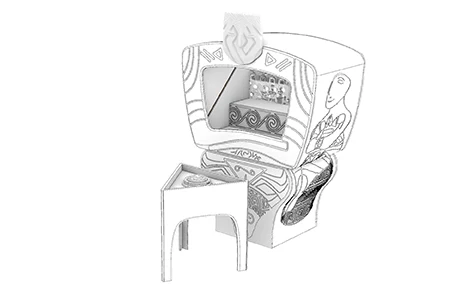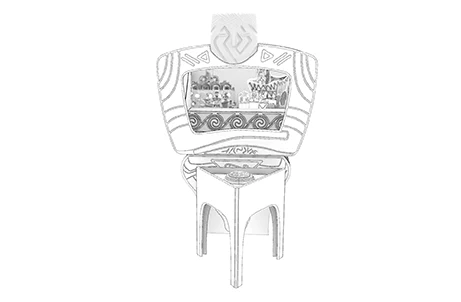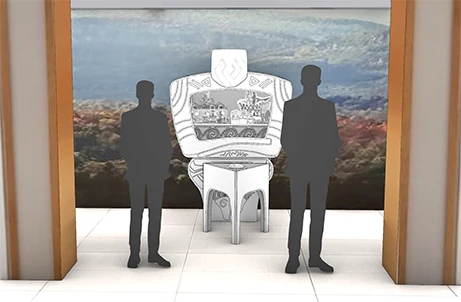
The Historical Materialist Illusion Theater is an installation based on the work of
archaeologist Marija Gimbutas (1921-1994), designed using CAD software and fabricated using CNC
technology. Gimbutas, whose work was discarded by American archaeologists in the 1970’s, argued
that the Neolithic cultures of Europe before c. 4400 BCE enjoyed millennia of relatively
uninterrupted peaceful living and achieved high levels of sophistication in art and design in a
non-patriarchal social order. Developments in DNA analysis over the past decade have vindicated
Gimbutas’ Kurgan hypothesis, which explained the spread of Indo-European languages across
Eurasia as the result of a massive migration out of the Pontic-Caspian Steppe.
The form of the theater is an artistic composition inspired by Gimbutas’ work
deciphering prehistoric art, but it functions as a self-contained exhibition of
digitally-fabricated representations of archaeological artifacts. Neolithic art often features
complex patterns or symbolic signs which are sculpted, painted, or carved on surfaces with
precisely rendered curvature. Using a computational image-based approach, these forms and
patterns are vector traced directly from images of Neolithic artifacts and fabricated with CNC
technology. Artifacts are represented with recycled 3D-printed plastic, lasercut plywood, and
displayed with a Pepper’s Ghost illusion.”



